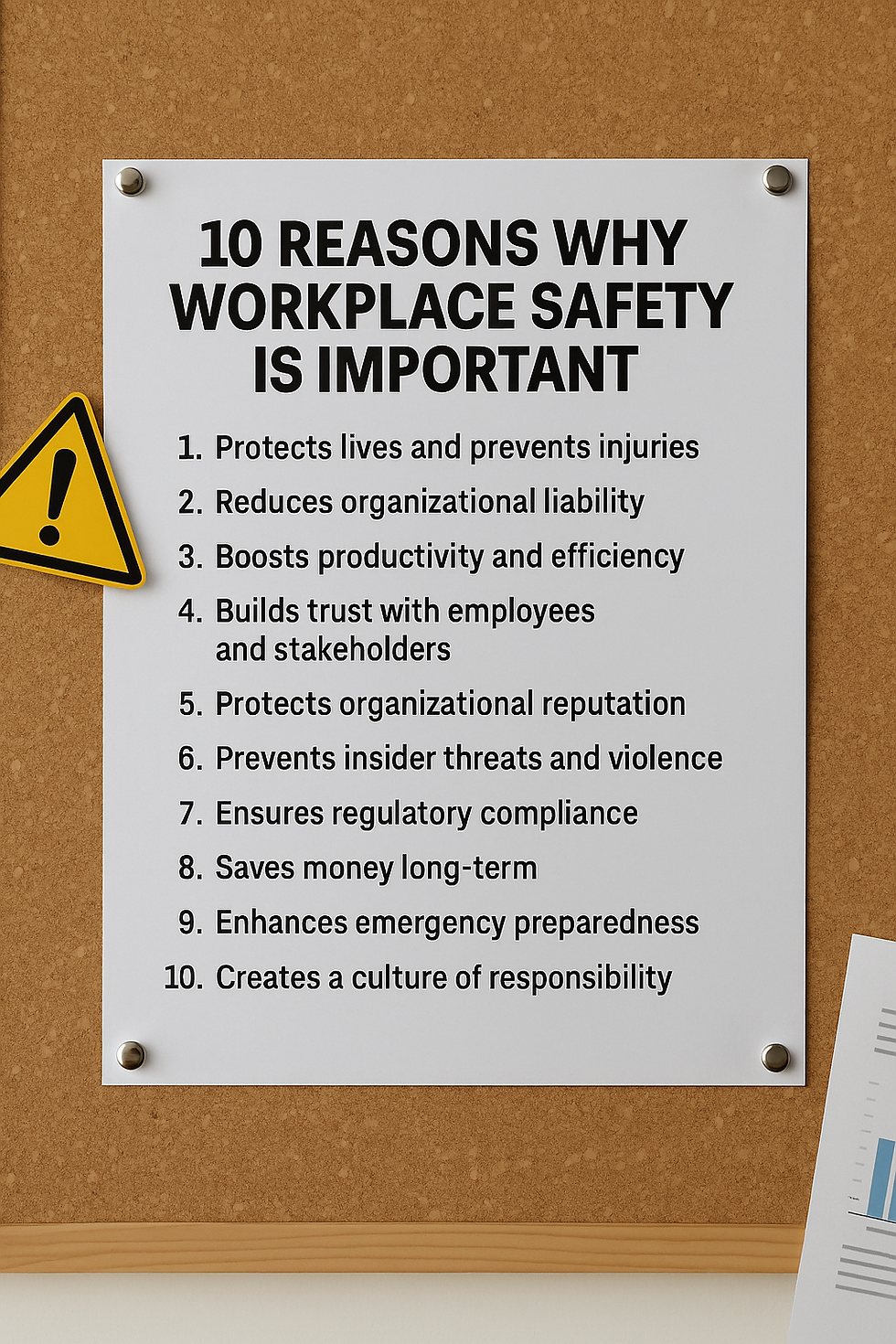10 Reasons Why Workplace Safety Is Important
- CrisisWire

- Sep 27
- 2 min read
Workplace safety isn’t just a compliance checkbox—it’s a foundation for protecting people, productivity, and profits. Whether in schools, corporations, hospitals, or government facilities, the consequences of neglecting safety ripple far beyond accidents or fines. Here are 10 powerful reasons why workplace safety must be a top priority for every leader, manager, and organization.
1. Protects Lives and Prevents Injuries
The most obvious reason: safety saves lives. A strong safety culture reduces accidents, prevents serious injuries, and ensures employees and students go home the same way they arrived—healthy and unharmed.
2. Reduces Organizational Liability
Lawsuits, fines, and regulatory penalties can devastate a business. A proactive safety program demonstrates due diligence, helping protect against costly litigation and government sanctions.
3. Boosts Productivity and Efficiency
Accidents disrupt operations. Injured employees, damaged equipment, and halted workflows all drag down productivity. Safer environments are more efficient and stable.
4. Builds Trust with Employees and Stakeholders
When leadership shows they care about safety, employees feel valued. Trust improves morale, retention, and overall workplace culture.
5. Protects Organizational Reputation
Public perception matters. One viral video of a safety failure can damage credibility overnight. Strong safety programs protect brand image and community trust.

6. Prevents Insider Threats and Violence
Workplace violence and insider threats are growing concerns. Safety protocols, access control, and threat assessments reduce risks of intentional harm. (See my book Locked Down: The Access Control Blueprint for step-by-step frameworks.)
7. Ensures Regulatory Compliance
From OSHA to Clery Act reporting in higher education, compliance isn’t optional. Failure to meet standards brings audits, penalties, and loss of operating licenses.
8. Saves Money Long-Term
Prevention costs less than recovery. Investing in safety now reduces insurance premiums, medical costs, lawsuits, and downtime.
9. Enhances Emergency Preparedness
From natural disasters to active shooter events, prepared workplaces respond faster, minimize chaos, and save lives. (See The Prepared Leader and The Threat Assessment Handbook for playbooks and checklists.)
10. Creates a Culture of Responsibility
Safety isn’t a program—it’s a mindset. Embedding safety into daily routines fosters accountability at every level, turning employees into active participants in risk prevention.
✅ The Bottom Line Workplace safety isn’t just about avoiding accidents—it’s about protecting people, ensuring continuity, and building a resilient organization. Whether you run a business, manage a school, or lead a public agency, safety must be the priority, not an afterthought.
📩 Need a workplace threat assessment or safety audit? Contact CrisisWire Threat Management Solutions today at crisiswire@proton.me.





Comments